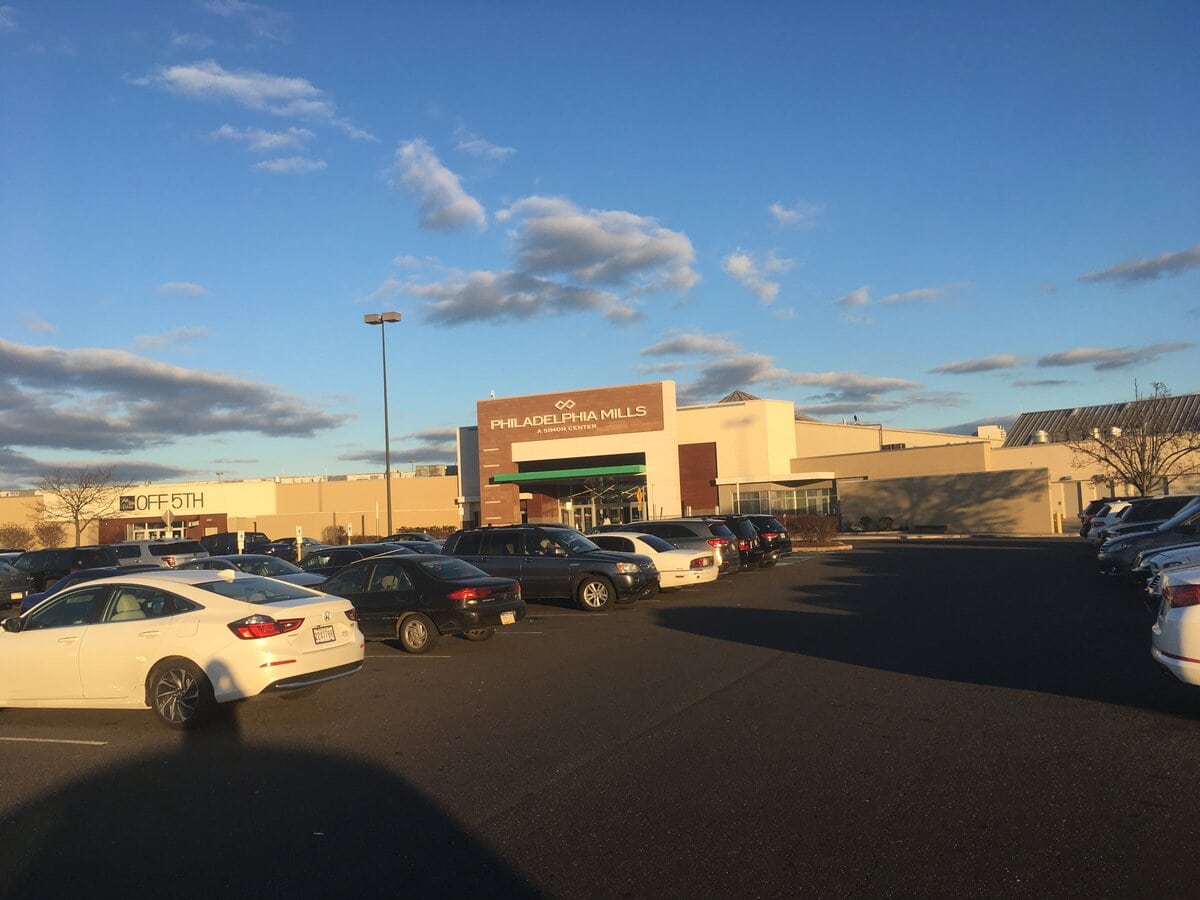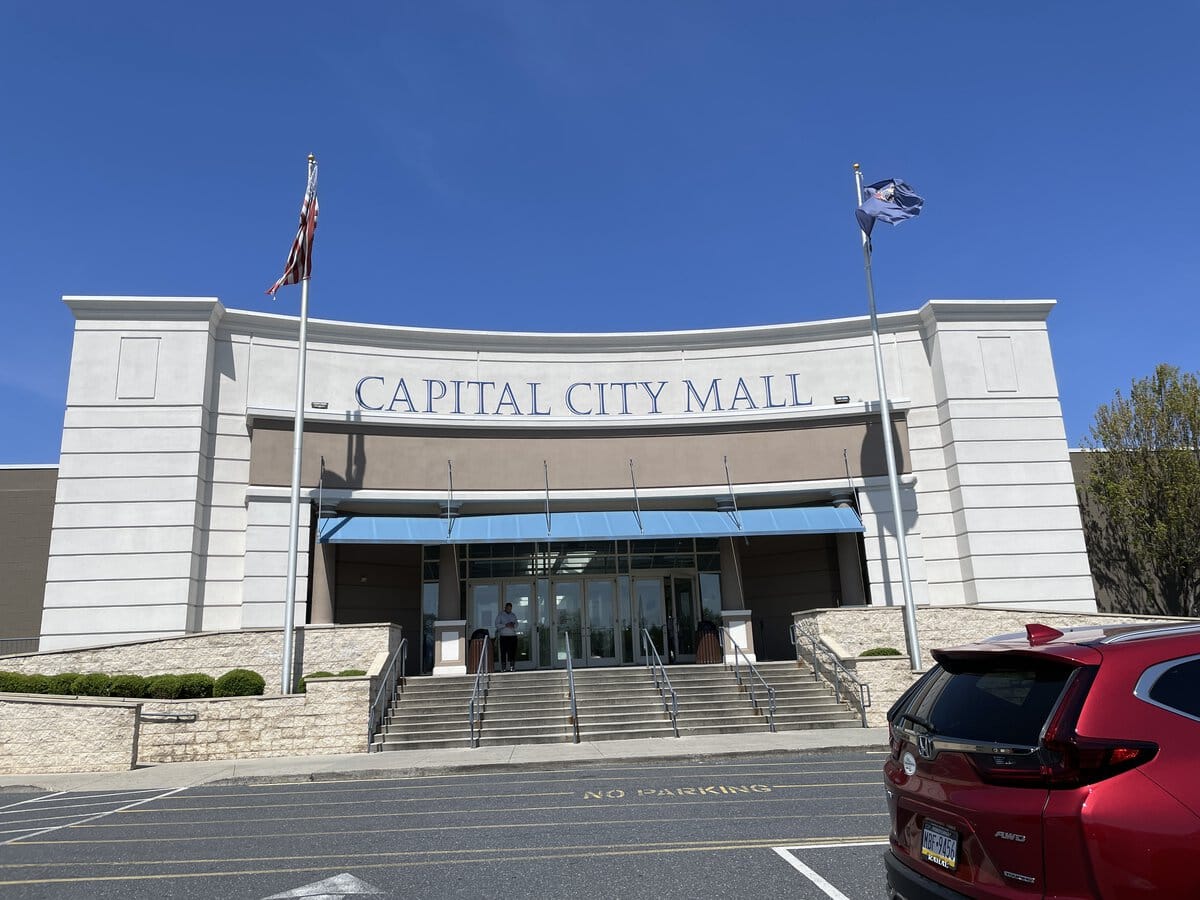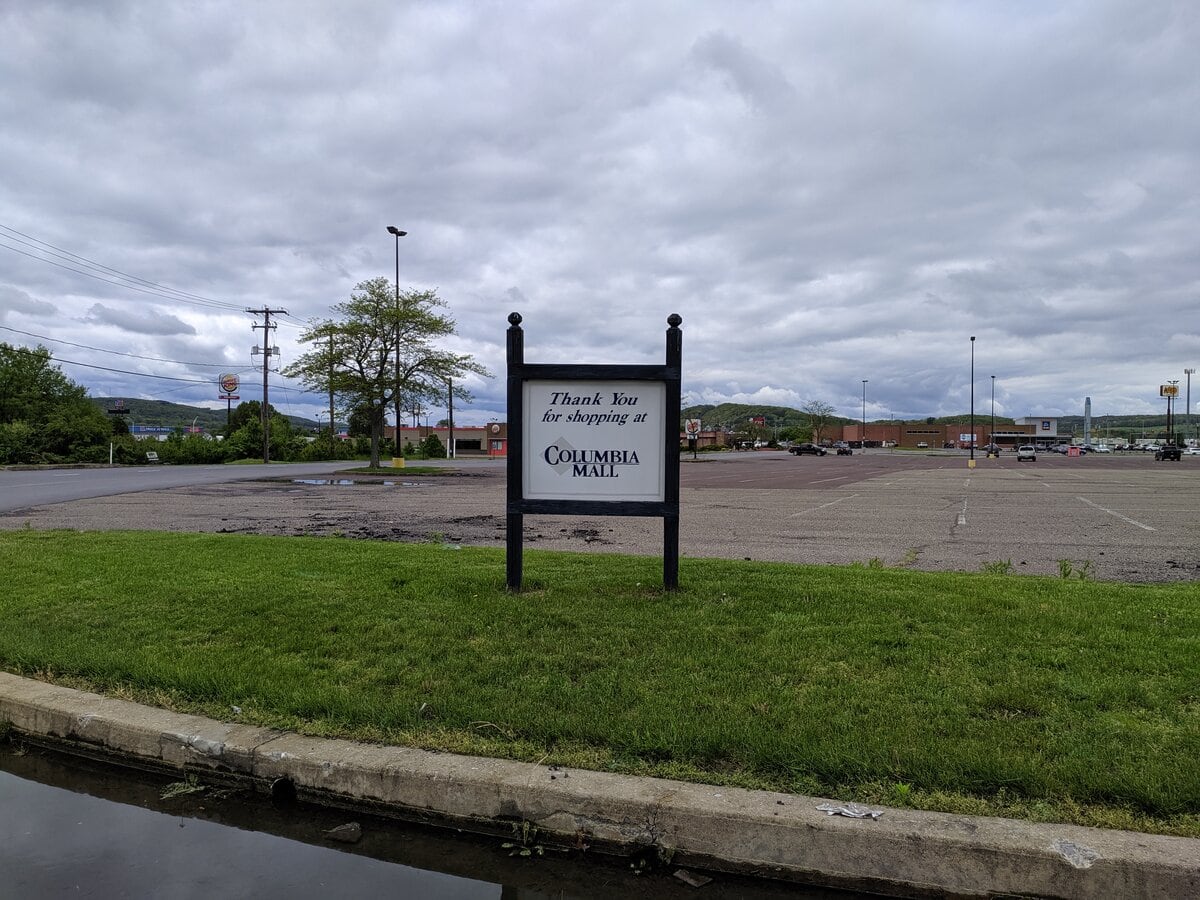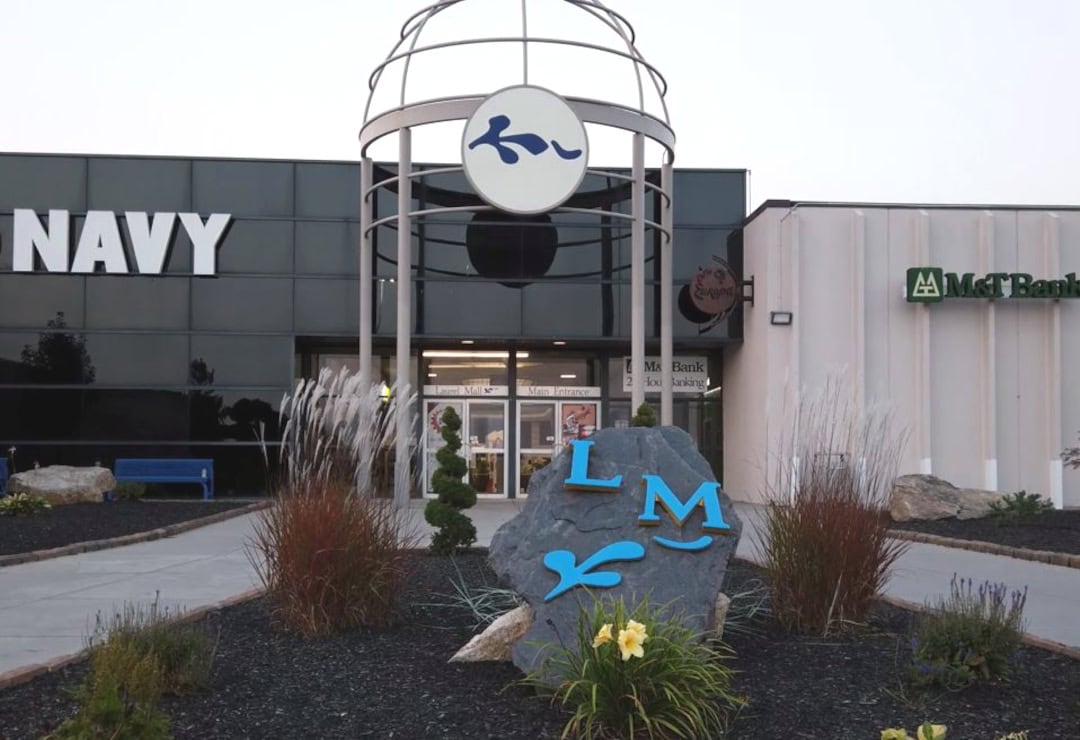Still Standing Where the Ramps Once Curved
The mall's outer facade pulls into view from MacArthur Road, bracketed by low signage and open sky. From the parking lot, the concrete angles haven't changed much since 1976, though the ramps inside are long gone. Fountains that once anchored the atrium disappeared thirty years ago.
Across the Lehigh Valley, malls like this used to mark the weekend. A stop at Bamberger's, soft pretzels from the mezzanine, maybe a movie across the lot if someone had cash. Lehigh Valley Mall was never flashy, but it was full of people, errands, noise, and fluorescent light.
Even now, with Dave & Buster's, Barnes & Noble, and Apple, it feels like a place built from habits. Anyone searching for things to do in Allentown, Pennsylvania, still knows the name.
How did the mall first take shape in the 1970s?
The Lehigh Valley Mall opened in October 1976. Developed by The Kravco Company, it followed a growing pattern in regional retail design: two enclosed levels, wide concourses, escalator wells, and three anchor stores to pull foot traffic from opposite ends.
Bamberger's, JCPenney, and Wanamaker's filled that role at launch.
Each name matched the regional mix of East Coast department store chains still expanding in the 1970s. Parking lots surrounded the property, laid out to hold nearly 6,000 vehicles.
Located off MacArthur Road between Grape Street and U.S. Route 22, the mall was built with car access in mind, which helped it grow quickly once suburban traffic intensified.
By the early 1980s, the mall's foot traffic put it among the busiest retail properties in eastern Pennsylvania. Retail square footage continued to match consumer expectations through the decade without dramatic reconfiguration.
The internal spiral ramp stood as a defining design detail, letting visitors cross levels without waiting for elevators.
That ramp remained until 1995. While store names and logos changed as mergers reshaped the department store market, the structure itself held steady during the mall's first two decades.
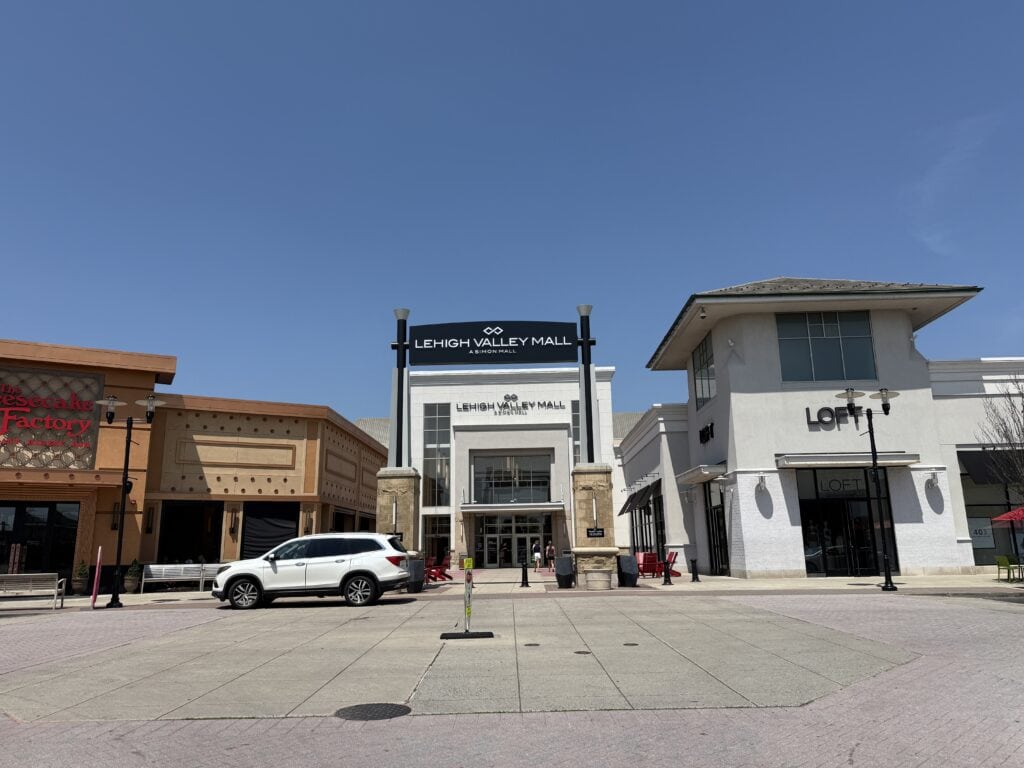
What renovations happened in the 1990s and 2000s?
The first major renovation came in 1995. That year, Lehigh Valley Mall removed its spiral ramp and installed a glass elevator in its place.
The change had less to do with access than with how malls were being rethought. They took out the fountains. Opened up the sightlines.
Swapped darker floors for pale, flat ones that didn't draw attention. The trend was toward cleaner layouts and fewer distractions.
Indoor malls across the country made similar updates. At Lehigh Valley Mall, these changes made way for broader tenant reshuffling, although the core anchor lineup remained largely intact.
In October 2007, a new 110,000-square-foot lifestyle center was added to the property. This expansion moved part of the mall's business outdoors, where brands like Apple, Sephora, and Barnes & Noble opened storefronts with street-facing access.
It wasn't a full shift away from enclosed retail, but it created a mixed format that could flex with changing consumer habits.
That same year, the northeast side of the property also welcomed the Lehigh Valley Convenience Center, an 87,300-square-foot strip with service-oriented tenants and additional restaurant space.
Which companies own and manage the mall?
In 2003, Simon Property Group acquired the Lehigh Valley Mall through its purchase of The Kravco Company, the original developer.
Simon took over operational control and brought the site into its national portfolio of enclosed shopping centers.
Years later, Pennsylvania Real Estate Investment Trust (PREIT) acquired a 50% ownership stake, forming a joint arrangement that remains in place as of 2025.
Simon continues to serve as the operating manager. Lease negotiations, capital improvements, and long-term planning all flow through Simon's national operations team, even though asset ownership is now split.
PREIT lists the mall as part of its strategic holdings, though it does not directly oversee daily property management.
Simon has guided major upgrades in the past decades, including the lifestyle wing and the Lehigh Valley Convenience Center in 2007.
Despite national headwinds in retail property, both companies have retained the mall as an active asset.

What new retailers have arrived at the mall since 2024?
Rally House opened at Lehigh Valley Mall in July 2024. Located on the lower level near Macy's, the store carries licensed gear for regional teams. It also stocks national team merchandise, plus home décor and accessories tied to major sports brands.
Golf Galaxy opened at Lehigh Valley Mall in October 2024, occupying a large-format space with fitting bays, performance simulators, and a wide inventory of clubs, footwear, and apparel.
It's part of the Dick's Sporting Goods brand family. This location features TrackMan and BioMech technologies used in on-site fittings and carries stock from leading manufacturers.
Carter's launched its 3,200-square-foot store in March 2025. Positioned between GameStop and Hot Topic on the second floor, the unit carries Carter's, OshKosh B'gosh, Little Planet, and Skip Hop product lines.
It's one of the mall's only full-scale national apparel additions inside the enclosed footprint since 2020.
MINISO held its grand opening in March 2025. The shop blends housewares, seasonal merchandise, and personal accessories in a fast-turnover layout. The design and pricing model follow the brand's broader U.S. rollout strategy.
Game Box Arcade began operations in 2025. Located near Boscov's on the lower level, the tenant offers traditional cabinets, prize machines, and digital redemption systems.
Unlike Dave & Buster's, Game Box doesn't serve food and focuses strictly on arcade play.
What food and drink options have opened or closed since 2024?
Iron Hill Brewery & Restaurant launched in the lifestyle center in July 2024. The venue includes its brewing system, indoor dining rooms, and a patio setup.
Menu items are tailored for beer pairings - pretzels, steaks, sandwiches, and most beers are made on-site.
This marks the brand's first integration into a traditional shopping mall setting.
Spice N Shake opened in 2024 with a counter near LensCrafters on the upper level. Its focus is basket-style fried meals, seasoned fries, chicken strips, and sauces served in walk-up containers.
The format fits the mall's shift toward compact food tenants with limited prep needs.
The Dunkin' Donuts kiosk near the ground-level escalators remains under construction. Work began earlier in the year, replacing the Tea Lady location that closed in late 2024.
Equipment and branding went in by May. It will follow Dunkin's mall-format setup, prepped beverages, drip coffee, and a rotating bakery selection.
The Starbucks kiosk on the lower level closed on September 1, 2024. The closure followed several weeks of shortened hours and staffing gaps.
By August, the location had reduced its weekday schedule, and internal signage was removed before Labor Day. Starbucks has not announced any plan to return to the main concourse.
A separate café remains active inside Barnes & Noble, but it operates independently of the mall corridor and is accessible only through the bookstore.
It continues to serve espresso and bakery items under the Starbucks license.
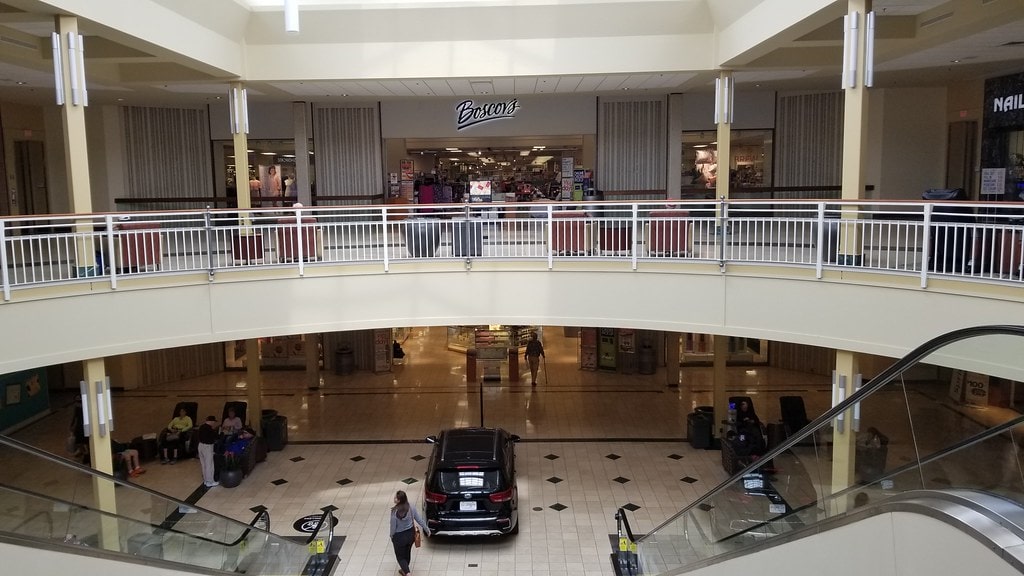
How is public transit access to the mall changing in 2025?
Lehigh Valley Mall no longer hosts a LANta transit hub starting in June 2025. Mall management informed the transit authority in early 2025 that the lease for the on-site bus stop would not be renewed.
The stated reason was safety, specifically, concerns about bus circulation in shared vehicle lanes and passenger pickup areas within the parking lot.
LANta responded by preparing to reroute service off-mall. As of June, new signage is being posted to redirect riders from the current stops.
Routes affected include the 210 and 211, both of which previously brought consistent weekday traffic from nearby neighborhoods and job centers.
Temporary drop-off locations are being negotiated, but no fixed site has been announced.
The current stop served as a central transfer point for riders connecting through LANta's EBS Green Line. With the lease ending, those transfers will shift to surrounding blocks or satellite lots.
This change marks the first time in over two decades that the mall won't offer direct bus access under a formal lease agreement.
LANta will maintain service near the property but will relocate loading areas off privately managed grounds.
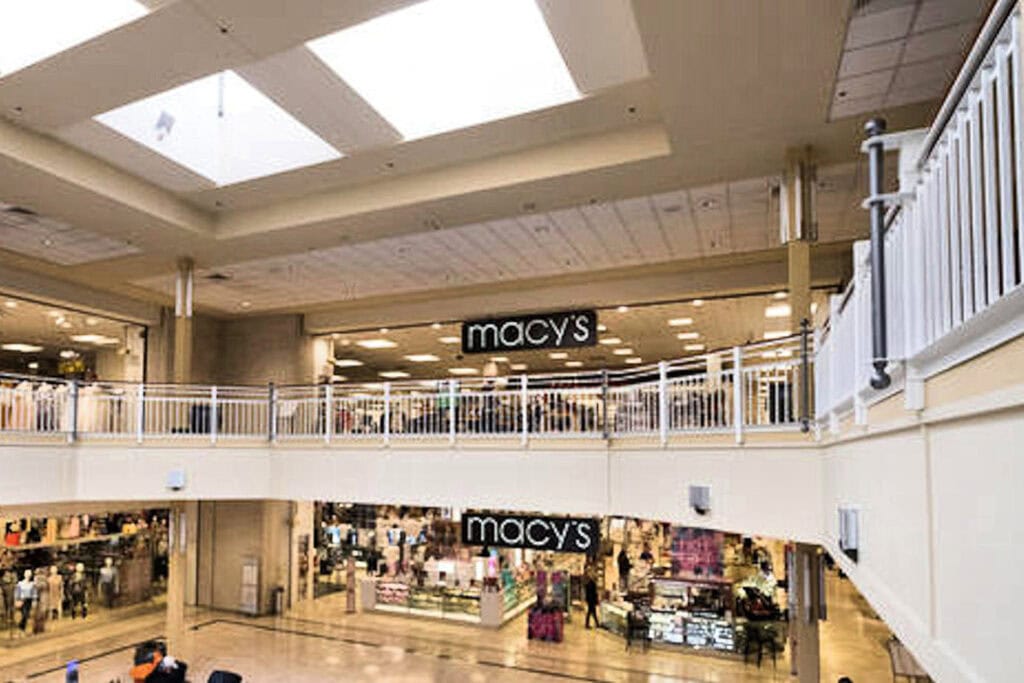
🍀




